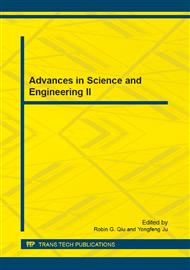p.893
p.901
p.907
p.913
p.918
p.924
p.930
p.938
p.944
Stacked Spiral Inductor Design and Modeling for Fully-Integrated DC-DC Converters
Abstract:
A structure of multi-layer spiral inductor having parallel and series branches of the metal strip was designed for fully-integrated DC-DC converters. As the result that the parallel branching structure greatly reduced the series resistance and the series branching structure greatly improved the series inductance of the inductor, the structure can achieve quality factor and current capability enhancement while compatible with conventional CMOS process. The quality factor was quantitatively analyzed with a scalable model and its origin was investigated at a structural point of view. From the experiment results, the substrate effects can be neglected in the interesting frequency range, 50MHz -500MHz, and the quality factor is enhanced beyond the additional parasitic capacitance.
Info:
Periodical:
Pages:
918-923
Citation:
Online since:
October 2011
Authors:
Price:
Сopyright:
© 2012 Trans Tech Publications Ltd. All Rights Reserved
Share:
Citation:


